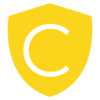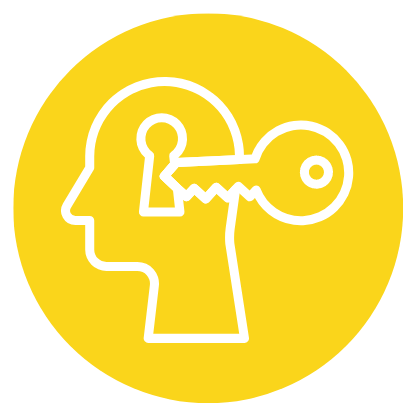The Science Of Thinking | Veritasium
Reference: Veritasium. (2017, March 02). The Science of Thinking [Video]. YouTube.
We Make Your Education Count

Get the Credit You Deserve and Become the Most Attractive Job Candidate by Earning and Posting A+ Badges to Your Linkedin Profile.
Sign Up to Get Started at Accredicity
|
Unlock the science of thinking and discover how your brain works to make sense of the world around you. Veritasium's Derek Muller investigates the science of thinking and how our brains process information in this video. He explores the way that our brains work by modeling them as two systems: System One (Gun) and System Two (Drew), which represent our automatic responses and conscious thoughts, respectively. Through examples and experiments, Derek reveals the limited capacity of our working memory and how slow, deliberate practice can allow us to automate tasks over time. He also shows how our physiology is a good indicator of the effort our brains are expending, such as increased heart rate, sweating, and pupil dilation. Understanding the science of thinking can help us recognize when we are not logically thinking and make conscious efforts to improve our thinking process. Learning Outline1. System one (Gun) is the automatic, efficient, quick processor of information, while system two (Drew) is the slower, more conscious, and more effortful processor. Instructional ContentWhen it comes to thinking, most of us find it to be an unpleasant task to undertake. We try to avoid it in any way we can, for example when asked how long it takes for the Earth to go around the Sun, some people immediately answer a day when the correct answer is a year. This is a common blind spot in thinking due to the fundamental way our brains work and process information. Psychologists have divided the brain into two systems, known as System One and System Two, or Gun and Drew. Gun is incredibly quick and able to process massive amounts of information in a short time and is responsible for automatic responses. Drew is the slower, conscious thought process and is in charge of following instructions and executing a series of steps. He is also the one capable of catching and fixing mistakes. Learning and building more and bigger chunks of information is possible by storing it in long-term memory and passing off tasks from Drew to Gun. This requires slow deliberate conscious practice repeated often enough, until it becomes automatic so Gun can take over. An example of this is being able to recite a rhyme when tying your shoelaces, which eventually leads to muscle memory. The Add One task is a great example of how hard Drew works when we're thinking. It requires us to remember four digits, and then add one to each digit, all while staying on the beat. When performing this task, our pupils dilate, indicating the effort from Drew. Contrastingly, when we are not engaged with the task or just chatting, our pupils don't dilate at all. In conclusion, this video demonstrates the science behind thinking and how our brains process and automate information. Gun is able to process a large amount of information quickly and efficiently, while Drew is responsible for conscious thought and catching mistakes. Learning and building more and bigger chunks of information is possible by passing off tasks from Drew to Gun, with slow deliberate conscious practice repeated often enough until it becomes automatic. The Add One task is a great example of Drew's hard work and the effort it takes to think. Cognition
|

Thinking is hard and takes a lot of effort, so we often try to avoid it. Our brains are like a team of two characters, System One (Gun) and System Two (Drew). Gun is like a librarian who stores all the information we know and use in our daily lives, like when to turn on the lights. He is really fast and can fill in the gaps, but he can't figure out new things. That's Drew's job! He is lazy and slow, but he can do all the hard work of solving problems and remembering new information. By doing this often enough, Gun can learn it and turn it into automatic behavior. So, thinking is hard work, but it helps us learn new things and get better at it over time! Video Quotes1. "For most of us, thinking is at least somewhat unpleasant. We try to avoid it, where possible." (Derek Muller) 2. "Now, one way of modeling how the brain operates is as though there are two systems at work psychologists call them system one and system two but maybe it's useful to think of them as characters so let's call system one Gun and system two Drew." (Derek Muller) 3. "Learning is then, the process of building more and bigger chunks by storing and further connecting information in long-term memory essentially passing off tasks from Drew to Gun. But in order for this to happen, Drew first has to engage with the information actively and effort-fully, often multiple times." (Derek Muller) Related Quotes"The capacity to think and reflect is one of the most important skills we can possess." (John Sweller, Cognitive Scientist) "By understanding how our brains work, we can better understand ourselves and our ability to think." (Daniel Willingham, Cognitive Psychologist) "Thinking is a skill that can be developed, just like any other skill." (Dr. Art Markman, Cognitive Scientist) Competencies1. Critical Thinking Learning Outcomes1. Remember: Students will remember the concept of using two systems for how the brain operates- System 1 and System 2. 2. Understand: Students will understand the limitations of working memory and how to overcome them by chunking information. 3. Apply: Students will be able to apply their knowledge of chunking by using the “Add One” task to demonstrate the difference between System 1 and System 2. 4. Analyze: Students will be able to analyze the difference between System 1 and System 2 by looking at the physiological responses such as pupil dilation while performing the “Add One” task. 5. Evaluate: Students will evaluate the impact of System 1 and System 2 on their ability to think and process information. 6. Create: Students will create their own strategies to better utilize System 1 and System 2 when problem solving or learning new information. Sample Answers1. I learned that our brains process information in two ways: System One (Gun) which is automatic and fast, and System Two (Drew) which is slow and conscious. System One stores information in long-term memory, while System Two exists in our working memory, and is only capable of holding four or five novel things in our minds at a time. 2. To make the most of our limited working memory capacity, we can use the process of "chunking" which is grouping things together according to our prior knowledge. This allows us to store more information in our working memory at once. 3. Lastly, I learned that when we are working on mentally strenuous tasks, our bodies will have a physiological reaction. This includes increased heart rate, sweat production, and pupil dilation. This is a sign that Drew is hard at work, and that most of our day-to-day life is a stroll for him with most tasks handled automatically by Gun. Derek MullerDerek Muller is a science communicator, filmmaker, and educator. He has a PhD in physics from the University of Sydney and has presented over 1,000 lectures on science and skepticism around the world. He is the founder and host of the popular YouTube channel Veritasium and is an expert on the science of thinking because of his extensive experience in communicating science and skepticism to the public. He is also the founder and CEO of Veritasium Media, which produces and distributes science education videos. He is associated with the University of Sydney, where he was awarded his PhD in physics. University of Sydney Learning DesignThese three competencies are important to learn for the courses in Cognition as they are all essential to the process of understanding and analyzing information. Critical Thinking helps to evaluate information, identify assumptions, and draw conclusions, while Problem Solving allows for the ability to develop and implement solutions to complex problems. Analytical Literacy facilitates the ability to read, interpret, and analyze data. To help build these competencies, a framework or pedagogy that can be used is that of the Socratic Method. This method encourages students to engage in dialogues and ask questions in order to explore their understanding of the material and challenge their assumptions. This encourages students to engage in critical thinking and problem solving, as well as to develop their analytical literacy skills. Additionally, activities such as case studies, simulations, and debates can be used to provide students with the opportunity to practice their critical thinking, problem solving, and analytical literacy skills. AssessmentMultiple-Choice Exam Question: Questions1. What are the two systems of the brain that are discussed in this video? KeywordsThinking, Cognitive Process, Mental Ability, Deliberate Practice, Muscles Memory, Automation Skills, Working Memory, Long-Term Memory, Deliberate Practice, Physiological Response, Mental Equivalent, Pupil Dilation, Automatic Responses, Conscious Thought Facts1. The two systems of thinking, System 1 (Gun) and System 2 (Drew), represent long-term memory and working memory respectively. Trends1. Create a series of exercises to help individuals master the "Add One" and "Add Three" tasks, using visual, auditory, and verbal cues to practice mental math. SourceThis learning instructional guidance was formulated using the GPT-3 language model created by OpenAI. ShareThinking is hard work, but essential for learning. We must use effort to develop our mental skills & build up our #musclememory. 🤔 With practice, we can make even the most complicated tasks automatic! #learning #mentalskills #automation #education 📚 @Accredicity |








 118 Creds - Cognition
118 Creds - Cognition


